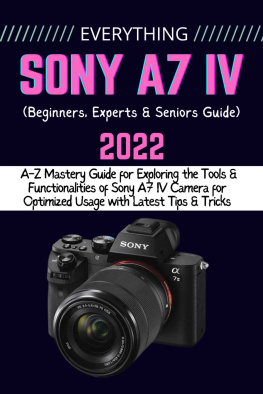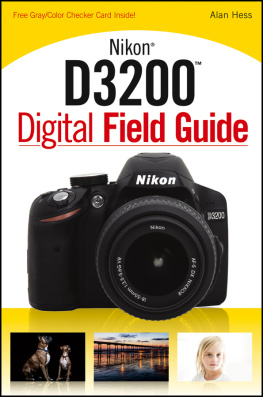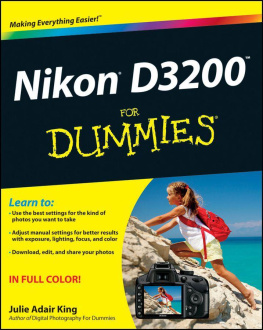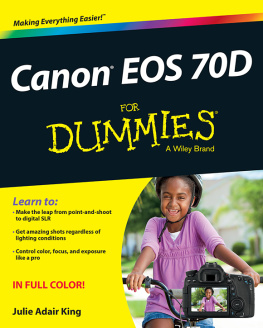Dr. Brian Matsumoto is a retired research scientist who has worked for 30 years recording experiments with a wide range of film and digital cameras. He now spends his time photographing with a variety of cameras and lenses. He enjoys exploring how a cameras potential can be expanded by pairing it with specialized optics such as microscopes and telescopes. He carries a camera on all his hikes and enjoys photographing nature. In addition to the seven books he has written for Rocky Nook, Dr. Matsumoto has published several articles and has had his photographs published in a number of periodicals. He is experienced in the technical aspects of photography and has taught courses on recording scientific experiments with digital cameras.
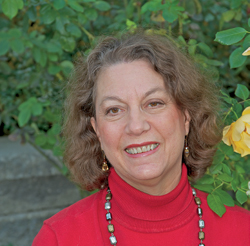
Carol F. Roullard has been an avid photographer since her high school years, where she first experimented with black-and-white artistic composition. Since then, she has continued photographing, mainly nature and architecture. Carol has used a variety of cameras covering a wide range of makes and models, from simple point-and-shoot cameras to complex professional-level cameras. Carol produces fine art photography and is utilizing her previous art business experience for her online gallery and art shows.
As a former Project Management Quality and Compliance Engineer, Carol spent a number of years developing procedural and quality control methodology for IT projects. In addition, she has developed and conducted training sessions covering best practices for procedural and quality control, breaking down complex subjects into easy-to-use approaches to learning.
The Sony a7 and a7R
The Unofficial Quintessential Guide
Brian Matsumoto
Carol F. Roullard
Brian Matsumoto (www.matsuimaging.com)
Carol F. Roullard (www.vistafocus.net)
Project Editor: Maggie Yates
Copyeditor: Maggie Yates
Layout: Jan Mart, Command Z
Cover Design: Helmut Kraus, www.exclam.de
Printer: Sheridan Books, Inc
Printed in the USA
ISBN 978-1-937538-49-1
1st Edition 2014
2014 by Brian Matsumoto, Carol F. Roullard
Rocky Nook Inc.
802 East Cota St., 3rd Floor
Santa Barbara, CA 93103
www.rockynook.com
Library of Congress Cataloging-in-Publication Data
Matsumoto, Brian.
The Sony a7 and a7R: the unofficial quintessential guide / by Brian Matsumoto, Carol F. Roullard. -- 1st edition.
pages cm
ISBN 978-1-937538-49-1 (softcover : alk. paper)
1. Sony digital cameras. 2. Photography--Digital techniques. I. Roullard, Carol F. II. Title.
TR263.S66M37 2014
771.3--dc23
2014010950
Distributed by OReilly Media
1005 Gravenstein Highway North
Sebastopol, CA 95472
All rights reserved. No part of the material protected by this copyright notice may be reproduced or utilized in any form, electronic or mechanical, including photocopying, recording, or by any information storage and retrieval system, without written permission of the publisher.
Many of the designations in this book used by manufacturers and sellers to distinguish their products are claimed as trademarks of their respective companies. Where those designations appear in this book, and Rocky Nook was aware of a trademark claim, the designations have been printed in caps or initial caps. All product names and services identified throughout this book are used in editorial fashion only and for the benefit of such companies with no intention of infringement of the trademark. They are not intended to convey endorsement or other affiliation with this book.
While reasonable care has been exercised in the preparation of this book, the publisher and author(s) assume no responsibility for errors or omissions, or for damages resulting from the use of the information contained herein or from the use of the discs or programs that may accompany it.
This book is printed on acid-free paper.
This book is dedicated to my father, Harold Zachary Frank, who, along with my mother, gave me strong roots in tradition and moral values and broad wings to soar and accomplish my goals.
Harold Zachary Frank January 22, 1921 - May 28, 2014
Acknowledgements
Writing this book was a collaborative effort and we are indebted to the expertise and aid of several people who helped bring this book to fruition. Thanks to Scott Dordick, owner of Acratech, Inc., for his assistance and discussions about using tripods in photography. Also, thanks to Matt Cardwell of Cognysis, Inc. for his guidance about focus stacking and the applicability of the Cognysis ShotStack, a program for extending the depth of field in our scientific and close-up photography. Both Scott and Matt provided product shots of their accessories for this book. In addition, we thank Sony for allowing us to use their product shots of the Sony a7 and a7R.
Last but not least, thanks to the staff of Rocky Nook. We are indebted to Gerhard Rossbach for his guidance in putting together our books, and to Joan Dixon, Managing Editor, and Matthias Rossmanith, Project Manager, for overseeing our efforts and the efforts of Maggie Yates, Editorial Assistant, and Jan Marti, layout artist, for formatting our book.
It is a major benefit for us to have an opportunity to work with such a wonderful group of people.
Brian Matsumoto
www.MatsuImaging.com
Carol Roullard
www.VistaFocus.net
Preface
The Sony a7 and a7R have a breakthrough camera design. At the time of writing this book, they are the lightest, least expensive, full-frame interchangeable lens cameras available to professional and amateur photographers. The cameras light weight and compact size makes them very portable, and convenient for the photographer to have at their side at all times. For the adventurous photographer, these cameras can be carried easily to remote locations for recording unique photographic vistas.
Sony has been refining a completely electronic viewfinder system: there is no optical finder on the a7/a7R. This electronic viewfinder provides not only a technical tool for taking photographs, but a creative tool as well. It offers a more efficient workflow to the busy photographer by providing immediate feedback on errors in white balance, focus, and exposure. For the artist, the viewfinder provides a way to pre-visualize the scene to determine if any aesthetic changes should be made. The viewfinder allows the photographer to preview the image with additional artistic elements, such as saturated vivid colors, or muted colors and subtle shades, to decide how to create the proper ambience for the scene. It also allows you to easily switch to black-and-white photography so you can visualize the scene as a monochrome image. This aids in framing the shot by allowing you to balance shadows, gray tones, and highlights for the perfect composition.
This is not to say that the camera is perfect. For those photographers who are interested in taking action shots with a rapid-fire burst capability, this camera is not as well suited as some heavier digital SLRs. However, the a7/a7R is eminently suitable for those photographers who are interested in taking pictures at a more deliberate rate, who are concerned about critical composition, and whose aim is to take landscapes, close-ups, portraits, or scientific photographs.


